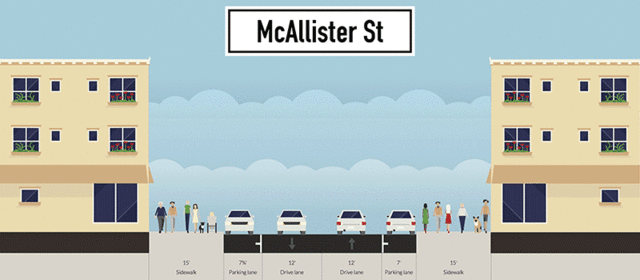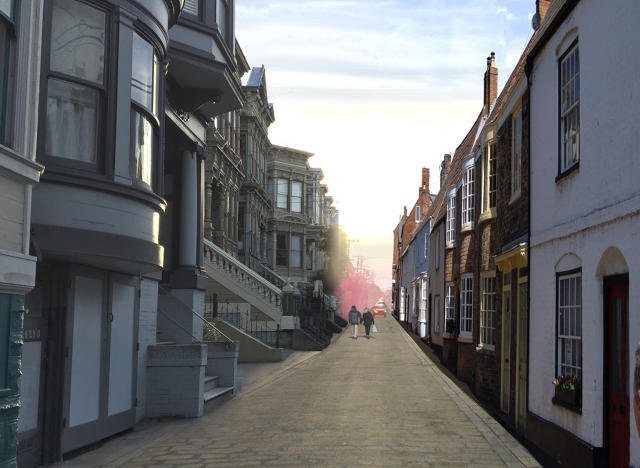San Francisco's housing crisis is legendary. The median housing price in San Francisco is now $1.1 million, more than the California and U.S. median by $700,000 and $900,000, respectively. The average rent in San Francisco is $3,586 a month. The bottom line is that middle class people can no longer afford to live in San Francisco.
Writer Steve Dombek does not have an urban planning background, but he does think he has a solution that could address both San Francisco's housing crisis and improve the city's quality of life. On his site, Narrow Streets SF, Dombek advocates for a more human-centric approach to urban planning by making streets just 15 feet wide, and designating them as pedestrian paths, first and foremost. Then slap more housing in the space you used to dedicate to roads.

"Narrower streets are just better streets," Dombek tells me, pointing to places like Ciutat Vella in Barcelona, the Seijo district of Tokyo, and many other international cities as models. For one thing, they're more walkable, and they're safer, because cars can't travel as quickly down them. They also encourage cleaner methods of commuting, like biking, and leave room for parks and green space.
They could also, potentially, make way for more housing. In Dombek's vision, instead of devoting as much as 40 feet down the middle of the street for parking and roads, which many roads in San Francisco do, you could shrink that down to 15 feet. Take San Francisco's McAllister Street, which runs from dowtown all the way up to Golden Gate Park. You could replace the road with an entire row of buildings, both housing and businesses, Dombek says. Cars and trucks could still use the roads, but they'd have to do so sparingly, otherwise dedicating themselves to the larger thoroughfares surrounding the street.
Dombek became fascinated with the idea of narrower streets in San Francisco after his wife, who was eight months pregnant at the time, was almost hit by a car three times in two weeks at a crosswalk near Alamo Square Park in the Western Addition. Why dedicate so much space to something that makes cities more dangerous to live in, especially when San Francisco's authorities are already looking for ways to redesign San Francisco's most deadly intersections to curb a surge in pedestrian deaths?

Dombek doesn't have any hard stats to prove that narrower streets will help solve San Francisco's housing crisis—after all, much of the city's housing shortages stem from restrictive zoning laws and a deeply entrenched culture of NIMBYism, a toxic mix no European-style road could remedy. And one could argue that narrower streets would lead to more traffic—especially if the goal is to squeeze in more people per square mile. Dombek point outs that his idea would have to work in tandem with other solutions: regulations on the types of vehicles allowed in certain areas, better public transportation, better cycling infrastructure, and improved zoning laws. It might well be a pie-in-the-sky idea, but clearly, San Francisco has to do something. The city is investigating turning 18 acres around Balboa Reservoir into more housing. Dombek sees that as an opportunity to try going narrower, building streets with more housing, more parks, and fewer cars than the San Francisco average. "Then, if people like it, you have something to point to," Dombek says. "And then, decades later, maybe there's more of an appetite to retrofit the rest of the city. It's worth a try."
You can read more about Dombek's vision for San Francisco here.